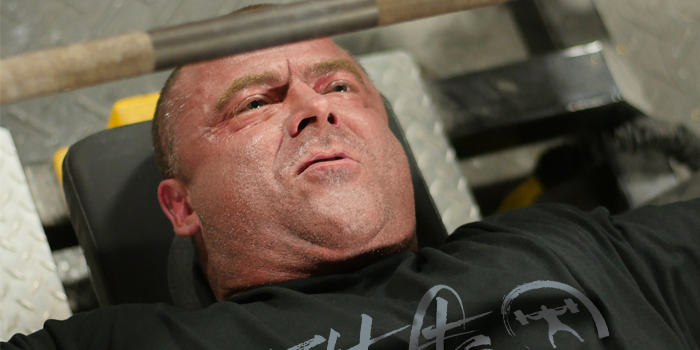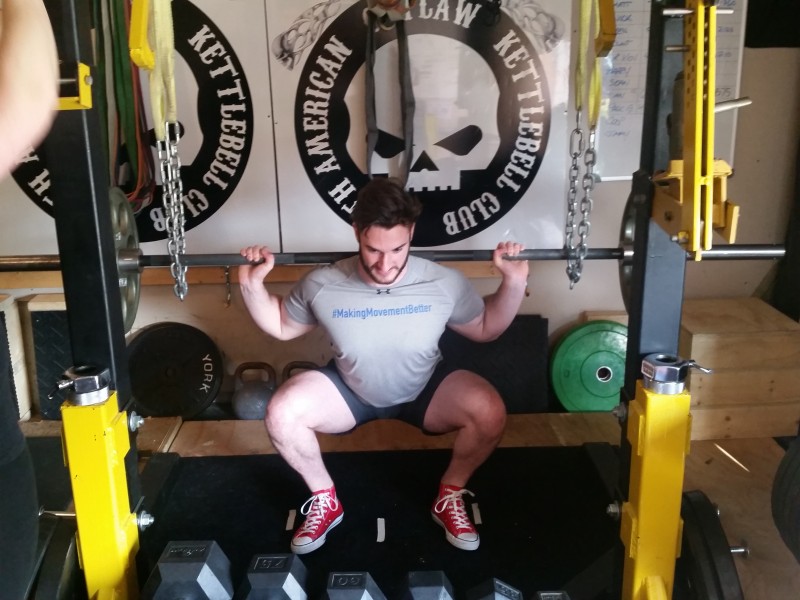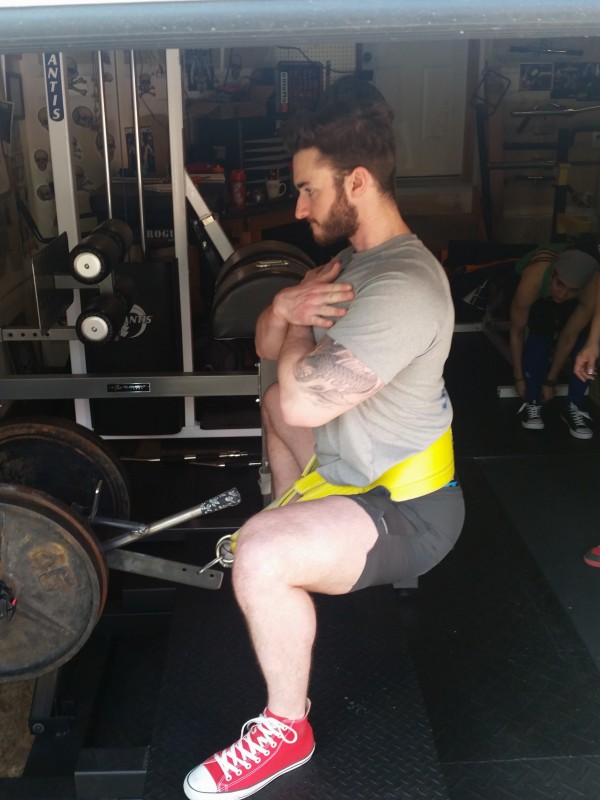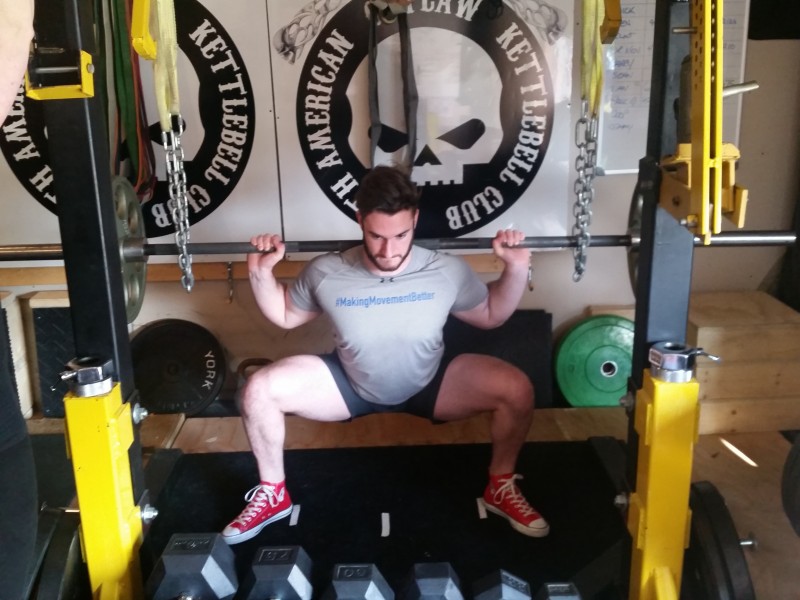
There are a lot of lifters who can benefit from setting up for a squat in a mechanically sound position that offers the best leverage and force production. That being said, there appears to also be a lot of competitive lifters that don’t seem to pay attention to optimum mechanics and therefore lose the opportunity to lift more weight in the most efficient manner.
Of course, we’re talking about getting setup for maximal lifts. If you’re only ever going to squat two plates for a million reps, your technique doesn’t have to be optimal. However, the heavier you lift, the more important technique becomes.
At our gym, we have the opportunity to help a lot of lifters improve their technique. Even though there are a lot of different body shapes, lever lengths, and differences in body weight and strength, the fundamental mechanics don’t change.
RECENT: Dr. Squat: Fred Hatfield’s Journey Through the 1000-Pound Barrier
If you watch different lifters, you will see a lot of different widths in stances, knee positions that push forward, and track both inside and outside the centre line of the ankle. Power in the squat comes from driving through the ankles into the knee, which should be “stacked” on top of the ankle.
Why is stacking the knee overtop of the ankle important?
Let’s use an analogy for structural collapse. If you have a ceiling that is compromised and you want to reinforce it, a 4"x4” piece of wood placed perpendicular under the ceiling will hold 9000 pounds. If you move the base outward (similar to a knee moving forward, tracking inward or outward during a squat) the strength of the brace is greatly reduced. Move the base farther out and the brace collapses, and so does the ceiling. If you keep the brace stacked perpendicular in a bracing position, it is in the strongest possible position for holding a maximum load. This is the same position we want to incorporate into the squat, to be in the best mechanically sound position to hold and lift the most weight as efficiently as possible.
If your knee is stacked directly over your ankle when you push against the weight, you will get the most efficient force production for lifting. If your knee is overtop of your toes, you will be pushing from the balls of your feet into a “hinge”—similar to pushing against a shock absorber—and will use more energy to lift less weight. When you see people at the bottom of the squat and their knees move inward on the ascent, that is an energy leak during the squat. That force production is lost on a weaker structural position.
I can’t count the number of people we’ve helped train who have complained of knee pain while squatting. When we can get somebody into a better structurally correct position, the knee pain seems to go disappear. Is this a coincidence? Answer: no
When you have two unaligned parts of your body pushing in different directions, it’s called shear force. For the most part, this is why people experience knee pain while squatting and potentially suffer an injury trying to squat. If the body parts are aligned properly on top of each other, this is called compression force and this is what everyone should be trying to achieve with proper squatting technique.
How do we teach somebody to squat properly?
First, we ask our athletes to squat normally and note their stance, knee position, hip position, and torso position during the squat. We will then adjust their foot position (which is usually wider) until they can squat with their knees as close to being stacked over their ankles as possible. We will mark the floor with tape to measure the optimum distance between their ankles in a good position. The next issue is to try and get the athlete to sit back to try and keep their shins as perpendicular as possible.
Sometimes it’s tough to get somebody to “feel” what you mean when you ask him or her to sit back in a squat. In the bottom of the squat position you should optimally have your weight on your ankles and you should be able to lift your toes off the floor and drive through your heels if you’re in the correct position.
The best tool we’ve had success with in getting people to sit back in the squat is a homemade belt squat machine. Instead of using a cable for the belt squat, we used a pendulum/bearing setup, which moves up and down on an arc. As you descend with weight on the belt squat, it pulls you forward. If you don't push back with your hips, you will be pulled forward. This has been by far the best tool for helping athletes get into a proper squat position as they get instant feedback on what it “feels like” to sit back. A few sets on the belt squat and we’re ready to squat in a rack with a clear idea and feeling of how to move our hips back to get into an optimal squat position. We generally move into training box squats at parallel to reinforce the “sitting back” position before trying to free squat.
WATCH: Dave's Squat Tips for NBS Lifters
The feedback we get from people after helping to fix squat technique is always positive. They can’t believe the difference in how much a proper mechanical setup makes the squat feel so much stronger, and it almost always results in bigger squats almost immediately. A wider, stronger stance while sitting back onto your heels properly also helps to incorporate the glutes and hamstrings into a more powerful push.
A few things we avoid when squatting for maximal loads:
- I don’t like Olympic lifting shoes for powerlifting. There is a big difference between Olympic lifting and powerlifting. Olympic lifters are pulling weight off the floor with dynamic velocity and are trying to get underneath the weight to catch it. Powerlifting is a more deliberate power movement that requires you to push and drive through the heels of your feet. If you’re wearing Olympic shoes with a wedge under the heels, it promotes pushing from the balls of your feet, which isn’t optimal
- You want to avoid the quick drop squat and bouncing off your ankles. We like to take the weight down into the hole controlled and strict. This allows us to stay tight and push the weight with maximal tension. If you drop from the top fast and bounce off your ankles hoping for some rebound, it’s pretty easy to lose your tightness and this is where people have a tendency to lean forward and allow their knees to come in, which are both huge losses in energy and force production
- Don't go too deep in the squat. I can hear the critics already: “Squatting too deep! Pfft!” If you only have to break parallel in competition, why do you want to squat deeper and push the weight from a less stable position? A lot of lifters lose their tightness by going too deep and dropping their torso forward, which is another energy leak. Control your depth, stay tight, and push more weight
If you have a Google machine, Google squat images of big raw squatters like Dan Green, Eric Lillibridge, and Chris Duffin. It isn’t a coincidence that these world-class squatters are squatting with a fairly wide stance, with their knees stacked almost directly over their ankles similar to a geared squat. Having cell phone cameras available to video your squat during training to check your position is probably one of the best training tools you can utilize to improve your squat technique and mechanics, and it offers immediate feedback to your positioning during the squat.
If you’re still not sold that solid positioning is key to lifting more weight, you can do a simple experiment with your bench press that will simulate a good or poor knee position in the squat. When you are benching, you try to keep your wrists directly over your elbows to be in the most optimal, powerful pushing position. Even using light weight, try moving your wrists forward or behind your elbow position and feel the difference in the weight and how much weaker you become not stacking your wrists above your elbow. Not to mention the strain and shear force that you feel when your wrists aren’t’ stacked over your elbows. The same concept should be utilized for stacking your knees over your ankles during the squat. Changing that position to a fundamentally weaker position by having your knees forward or tracking inside or outside your ankles results in a weaker pushing position.
Of course, there are a lot of other things we work on with fixing lifters' squats, including staying tight in the back and lats, torso and head positioning, and other factors that play a huge part in optimizing a maximal squat.
I guarantee that a few subtle changes to strengthen your positioning into a more mechanically correct position will pay huge dividends when you’re trying to lift maximal loads. Paying attention to proper positioning is critical in all your lifts, not just the big three. Improving your technique and mechanics on all your lifts should be a priority if you’re trying to lift heavy.














Why do you say that? My background is in human biomechanics can argue for and against this.
I would like to read your reason why?
To Ken Whetham, thank you so much for writing this. Sometimes I agree with your viewpoints and sometimes I don't, but I always appreciate another point of view from someone more advanced than me that might help me get better.
OH WAIT! I forgot, IPF lifters are better than everyone else (if in fact this person is an actual powerlifter and not a keyboard lifter).